The 66th Frankfurt Motor Show, also known as the IAA (Internationale Automobil-Ausstellung) is without a doubt one of the world’s largest automotive shows. LIASE Group President and Managing Director Europe, Wolfgang Doell, Managing Director for the Americas, John Bukowicz, and Managing Director Asia, Vanessa Moriel joined over 400 global automotive exhibitors at the 66th edition of the show taking place September 17 to 27 at Messe Frankfurt. A signifier of its scope and importance for the German automotive industry, the event was formally launched by German Chancellor Angela Merkel.
Held every two years in variation with the Paris Motor Show, the Frankfurt show is laid out in 12 separate buildings connected by overhanging sidewalks that cover 592,000 square meters; the show takes place on a massive scale. Organizers were expecting over 900,000 visitors over the course of the exhibition. Around one in five visitors are from countries other than Germany.
The Frankfurt Motor Show is known to delight car fans with car launches, brand new concept cars, announcements, and the latest in automotive innovation and technology. However, like other auto shows around the world, it also serves as a platform for discussions around the future direction and trends that are impacting the automotive industry.
In this sense, the Frankfurt Motor Show highlighted that new autonomous vehicle technologies are in the process of transforming not only the car industry, but also transportation as we know it. Transportation ministers and their top officials from the G7 countries were present in Frankfurt to discuss the impact of vehicle automation on infrastructure, policy, regulation, and transportation as a whole.
Another hot topic at the show was connectivity. Seven carmakers showcased automobiles with Android Auto. Carmakers are increasingly competing on connectivity features as customers have shown they are willing to switch brands and pay a premium for their preferred connectivity features. Surveys have shown that buyers in China are particularly willing to switch brands for improved connectivity features, although those in the U.S. and Germany are increasingly demanding these features as well.
While green, connected cars were front and center, dropping oil prices and global demand for large cars also meant that large SUVs and high-performance automobiles had a prominent place at this year’s show.
The mood in Frankfurt was mixed, as carmakers were optimistic about a buoyant U.S. economy and, to a lesser extent, a recovery in Europe. However, carmakers are uneasy about instability in the world’s largest car market – China. New competitor from internet giants are also perplexing traditional auto players. The Volkswagen diesel scandal was another factor dampening the mood halfway through the show.
Autonomous, Electric, and Concept Cars: The Future is Now
As usual, German manufacturers had a major presence at the IAA. Audi built a huge temporary building the size of a typical retail box store, and BMW occupied an entire building the size of some city’s convention center. Other European carmakers also drew some buzz with exciting debuts and unveilings.
Mercedes’ big reveal in Frankfurt was its new Concept Intelligent Aerodynamic Automobile, Concept IAA for short. The “Transformer” car’s major innovations are extendable aerodynamic parts that deploy in the front and back at high speeds, improving airflow while in movement, but maintaining a distinctively stylish appeal while at rest. This technological high-wizardry was enabled by the digitalization of the design concept, which allowed for the development of aerodynamic flow simulations. The digitalization of automotive development and production is referred to in automotive industry circles as “Industry 4.0. The Concept IAA also featured a whole slew of autonomous and connectivity features, with sensors, car to x communications, and autonomous driving functions.
The venerable carmaker held a massive press conference to present the IAA along with four new models, the C-Class Coupé and the S-Class Cabriolet, and their respective standalone AMG versions.
Porsche attracted a lot of attention with the release of its Mission E Concept. Located in the VW Group hall, the fully electric sports car was quickly labelled as a Tesla fighter. The Mission E claims a range of almost 500 Km and an ability to recharge 80 percent of this range in 15 minutes, because of its use of 800 volts charging port. Customers can expect a production of the Mission E Concept within a couple of years.
Using the same battery technology, Audi’s all electric e-tron Quattro is Audi’s answer to the Tesla Model X, with an estimated range of close to 500 Km and a charging time of 50 minutes. While still a concept today, Audi is planning a production model of the crossover for 2018.
BMW CEO Harald Krüger made headlines around the world for all the wrong reasons as he fainted onstage during a news conference he was hosting. The CEO was in the process of unveiling a facelifted BMW flagship 7-series sedan. The BMW design team reworked the 7-series with a large kidney grille on the front, which also serves the dual purpose of increasing the aerodynamics of the car and controlling engine cooling through computer control. The entire inside cabin has also been reworked in order to create a viable competitor to Mercedes’ S-Class.
BMW Chief Finance Officer Friedrich Eichiner also announced that it was in talk with Toyota for a possible expansion of their existing alliance. The two carmakers are working together on fuel-cell vehicle technology and recently showed a prototype vehicle, the BMW 5-series with a hydrogen engine. Analysts believe that this announcement signals a larger trend toward further consolidation in the automotive industry. This is driven by increased pressure for investment in new technology and slower industry growth. Fiat-Chrysler has pursued and been denied an alliance with GM, while Daimler AG has an alliance to build small vehicles with Renault-Nissan.
Toyota followed up on the 2014 presentation of a design study of its C-HR Concept at the Paris Motor Show with the unveiling of an updated practical model. The C-HR is addressing the need for a small sized SUV in Toyota’s line-up, created when it took the RAV4 upmarket. While no launch date was announced, further changes will be unveiled at the Geneva International Motor Show in 2016, bringing it closer to a production-ready model. Toyota also unveiled the 4th generation Prius as well as a hybrid version of the RAV4.
GM had a large presence at the show compared to its American brethren. GM global CEO Marry Barra was present to unveil the new Opel-Vauxhall Astra family sedan. The Astra is sold by Opel, in Europe, and Vauxhall, in England, and competed with the VW Golf and the Ford Focus. The model can boast a series of connectivity systems, such as OnStar and the new generation IntelliLink, which connects to Google’s Android Auto and Apple’s CarPlay. Lane Departure Warning, Collision Alert, Collision Imminent Braking and computerized parking will also be available on this down-market model.
Classic German carmaker BORGWARD debuted its new BX7 SUV, the brand’s first offering since 1961. Looking a lot like Audi’s Q5, the BX7 will launch in China early next year before coming back to Europe. The first BORGWARD factory has already been built in Beijing. A second vehicle model is expected in the spring, which will be followed by more releases. The Company targets sales of five hundred million cars in the medium term and 1.6 million cars by 2025. The company is positioning itself as a premium brand and is expected to develop hybrid and electric variants of its vehicles in the near future.
Tesla debuted its Model S P90D in Europe at the IAA. The model which sits atop the premium electric automakers range offers zero emission and a sleek design. The debut of the P90D was, however, shadowed by news that Tesla’s Model S had only sold 958 units this year through August, below BMW’s i3. Taking into account that both Porsche and Audi released model clearly aiming to take Tesla head on in the global market, the show was perhaps a reality check for Tesla in Europe. The electric carmakers has yet to fill its European sales chief position.
Suppliers Make a Big Splash
The Frankfurt Motor Show was further proof that while major OEMs might see the automotive ambitions of Google, Apple, and company as a looming threat, German tier 1 suppliers are gleeful at the rich prospects presented by the growing connected-car business.
Bosch GmbH, Continental AG and ZF Friedrichshafen AG have all leveraged their automotive know-how to work closely with U.S. technology giants. The large German suppliers have also aggressively invested in the radar sensors, cameras, software and other advanced driver-assistance technology that are forming the basic pieces of the autonomous car puzzle. By doing so, they hope to maintain their dominant position in the industry.
ZF displayed the latest version of a small electric-driven autonomous car that is has called the Advanced Urban Vehicle to showcase its technology, as well as that of TRW technology, which it acquired for $12 billion earlier this year, largely to complement its drives and transmissions business with TRW’s driver assistance systems and auto safety expertise.
In line with its recent purchase of TRW, ZF showcased its camera and radar technologies as well as its Automatic Emergency Braking and Emergency Steering Control. Company executives also outlined steps taken to ensure that the merger process unfolds smoothly and that the new divisions are integrating without any hiccups.
Continental showcased an array of autonomous driving technologies, advanced seating capabilities, tire technologies and powertrain systems to prospective OEM customers. These included the reveal of Car Port, an in-car dashboard interface that enables users to interact with IoE devices. Probable uses include opening a garage door or opening the house lights when a car approaches the owner’s homes.
Continental beefed up its automotive software business in May by acquiring Finnish industrial group Elektrobit Oyi for $680 million. Half of its engineering staff is now composed of software engineers.
Meanwhile, Bosch has developed into the world’s leading manufacturer of radar systems. Frankfurt allowed it to showcase its remote parking system that allows a car to autonomously find an open space in a garage and park itself. Bosch displayed a whole series of products ranging from cleaner, more powerful engine technology, to connectivity features, electrification technology and autonomous driving systems.
Chairman of the Board of Management Dr. Volkmar Denner sounded a triumphal tone, stating that “Bosch is assuming a leading role in the transformation that is about to sweep through the automotive sector. Automation, electrification, and connectivity – Bosch is already enjoying success in all three areas.” Bosch believes that automation, electrification, and connectivity are the major pillars creating the automotive of the future. As such, Dr. Denner outlined his company’s vision and efforts in all three sectors.
Editors Notes:
The LIASE Group is a retained executive search and talent management consultancy, which specialises in the global automotive sector. We provide CEO and top management placements & succession expertise across multinational automotive suppliers. Our expertize is our in-depth understanding of conventional and unconventional automotive companies with sector expertise including OEM’s, importers, auto financing, auto leasing, auto dealers, private equity firms and tier 1 suppliers.
PR Contact: Vanessa Moriel, Managing Director Asia (Tel: +852 2840 0406)
info@liase-group.com

LIASE Group Managing Director for the Americas John Bukowicz (left), LIASE Group Managing Director Asia Vanessa Moriel (center) and LIASE Group President and Managing Director Europe Wolfgang Doell (right) standing in front of the Mercedes-Benz logo at the Frankfurt Motor Show.

LIASE Group Managing Director Asia Vanessa Moriel standing in front of the Renault booth at the Frankfurt Motor Show. Renault unveiled a new Megane, which stands at the bottom rung of its upmarket range. With a design that seeks to be bold and outstanding, the Megane sports a large touchscreen in the cabin. It will be competing with the VW Golf and the Peugeot 308.

LIASE Group Managing Director Asia Vanessa Moriel (left) and LIASE Group President and Managing Director Europe Wolfgang Doell (right) pose for a picture during the Frankfurt Motor Show.

LIASE Group President and Managing Director Europe Wolfgang Doell stands next to an antique ambulance at the 2015 IAA.
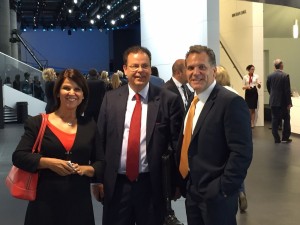
LIASE Group President and Managing Director Europe Wolfgang Doell (Centre), and LIASE Group Managing Director Americas John Bukowicz (right) pose for a picture in Frankfurt.

Automobilwoche Managing Director Helmut Kluger (left) posing next to LIASE Group President and Managing Director Europe Wolgang Doell in front of a Borgward engine.
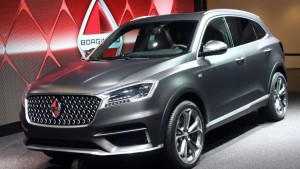
Fortified from a partnership with Chinese carmaker Beiqi Foton Motor Company, mostly known for its commercial vehicle production, as well as its partnership with Mercedes-Benz in the Chinese market, Borgward unveiled the BX7 hybrid SUV to the crowd in Frankfurt. The first brand offering from Borgward in nearly half a century, the new SUV will launch in emerging markets before making its way to Europe in the next 2 years. There are still no word on whether the German brand would make a return to the U.S. market. The German SUV is expected to compete with the Audi Q5, the Porsche Macan, and the Buick Enclave in the Chinese market.
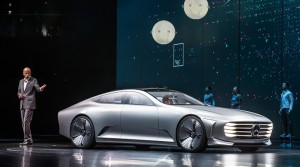
Benz AG CEO Dieter Zetsche unveiled the futuristic looking Concept IAA in front of a massive crowd at the Frankfurt Motor Show.

German Chancellor Angela Merkel examining Mercedes-Benz’s new Concept car in Frankfurt.

All five of Mercedes-Benz’s new models are shown together at the Frankfurt Motor Show Mercedes Benz press conference.

Bosch had an impressive presence at the Motor Show, rivaling some of the smaller OEMs. Amongst the many technologies it showcased was a second generation low-cost, 48-volt hybrid system with a smaller lithium-ion battery and less expensive components compared to existing systems. The system will assist combustion engines during acceleration, is capable of regenerative braking, and provides a 15-percent fuel economy improvement. The new model shown in Frankfurt had a transmission-integrated electric motor capable of powering a remote-controlled automatic parking system.

PSA CEO Carlos Tavares speaking at the New Mobility World Forum. Connectivity and autonomy were ubiquitous at the Motor Show in Frankfurt. 150 technology companies, automotive companies, and mobile service providers gathered at a new exhibition area called the “New Mobility World’ to highlight the mobility of tomorrow. The Exhibit revolved around 5 topics, “Connected Car,” “Automated Driving,” “E-Mobility,” “Urban Mobility,” and “Mobility Services.” G7 transportation ministers gathered on September 17 at the “New Mobility World” forum. Key executives expected at the exhibition included PSA CEO Carlos Tavares, Chris Urmson, the head of Google’s driverless car program, and Mike McNamara, CEO of the electronics giant Flex (formerly Flextronics).

Porsche’s Mission E was one of the most talked about debuts at the show, as it signalled the luxury carmaker’s entry into the electric car market. Exaggerated design clearly signaled that the car remains in the conceptual stage, but the performance specs made its very clear that the Mission E, once it enters the market, will be competing head-to-head with Tesla.

Interior cabin of the Concept Mission E. Porsche specifically aims to beat Tesla in charging, as it claims its battery system will be able to recharge 80-percent of its battery power in just 15 minutes, providing around 400 Kilometres of range.

Lamborghini unveiled the Huracan LP 610-4 Spyder convertible in Frankfurt. The super sports car will boast a 602bhp 5.2-litre V10 engine once it goes on sale next spring.

Bugatti’s Vision GT Concept caught the eye of many a car lover in Frankfurt. Unfortunately for anyone who wanted to own one, the concept car is not intended for production, but for a game console. The Vision GT was designed and engineered for Playstation’s Gran Turismo 6. Nevertheless, the Vision GT was understood to preview the new design language for Bugatti.

Audi’s all electric e-tron Quattro boast the same battery system as the Porsche E Mission Concept. The crossover SUV uses 3 electric motors, one for the front wheels and two for the back. This should give it the kind of performance drivers expect from the German luxury automaker.

Bentley unveiled an ultra-luxury SUV, the Bentayga. Rumours have it that the first unit will be delivered to Queen Elizabeth II. The British company can produce between 3000-4500 Bentaygas per year. Based on VW Group’s MLB-Evo platform, the Bentayga has a computer controlled air spring system, a rounded yet front mesh grilles filled design, and a W12 engine with 600 hp at 6000rpm and 663 lb-ft of torque between 1250rpm and 4500rpm.

Jaguar unveiled its first ever SUV, called the F-Pace. Initially announced in Detroit earlier this year, the stylish luxury sports utility will be entering the increasingly crowded luxury SUV space just as auto demand in emerging markets is being questioned.

Mercedes-Benz presented a beautiful cabriolet version of its AMG S63 4Matic.

The new X1 with a sportier design was shown off by BMW.

Infiniti unveiled the Q30, a small crossover/hatchback presently only available in the sport and premium versions.

The Mercedes IAA concept garnered significant media attention due to its high-tech take on aerodynamics and automotive design.
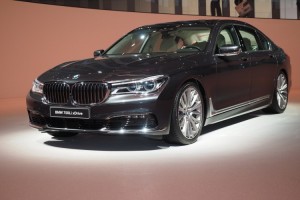
BMW unveiled a reworked version of its flagship 7 Series in Frankfurt. BMW significantly reworked the cabin space, ensuring that everything is covered by wood, leather, or aluminum.
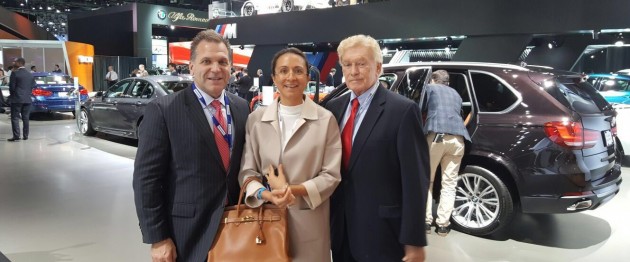




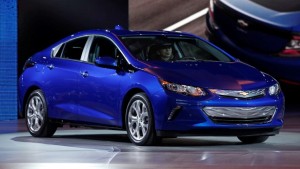










































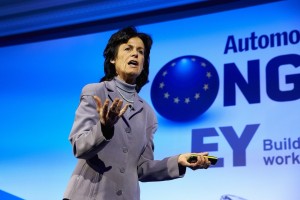

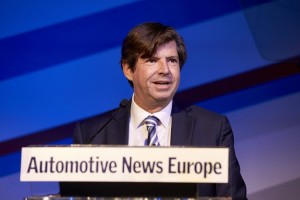

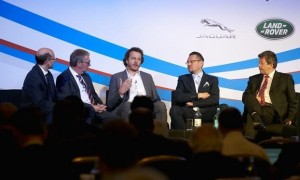

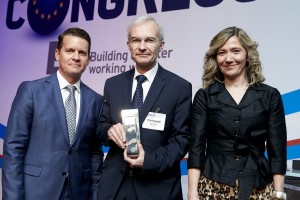
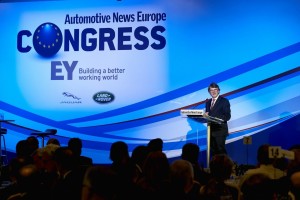


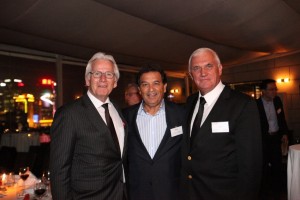






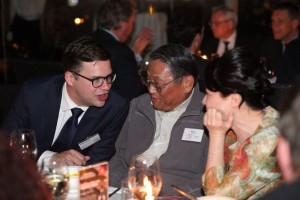






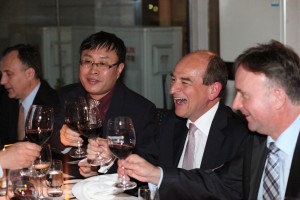






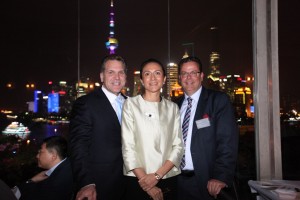

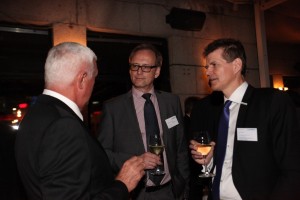




January 31, 2016